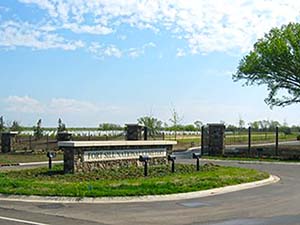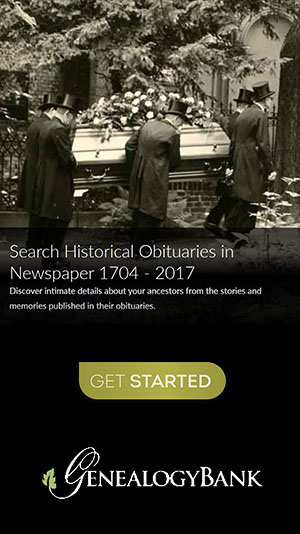Search Oklahoma Death Records
 Oklahoma Newspapers, Full Search (1810-1960), 114 titles
Oklahoma Newspapers, Full Search (1810-1960), 114 titles Oklahoma Obituary Search, (1981-current)
Oklahoma Obituary Search, (1981-current) Oklahoma Birth Records Database, (1810-1960)
Oklahoma Birth Records Database, (1810-1960)
Ft. Sill National Cemetery - Burial Records
Elgin, Comanche County, Oklahoma
GPS: 34.764712, -98.348483
2648 NE Jake Dunn Rd
Elgin, OK 73538
Date published: January 17, 2018
Total records: 6,093
History
Fort Sill National Cemetery in Elgin, Okla., was dedicated on Nov. 2, 2001. The Fort Sill National Cemetery was the second national cemetery to be constructed in Oklahoma and became the 120th national cemetery to be administered by the National Cemetery Administration. Fort Sill National Cemetery lies in southwestern Oklahoma, approximately 75 miles from Oklahoma City and five miles north of Lawton. Land for the national cemetery was transferred from the Department of the Army’s Ft. Sill Military Reservation in 1998.
The cemetery is situated on land that was once Indian Territory. A military reservation was staked out in January 1869 by Maj. Gen. Philip H. Sheridan and was formally established as Camp Wichita the following month. Sheridan later renamed the garrison as Fort Sill in honor of fellow West Point classmate, Brigadier General Joshua W. Sill, who died in the Battle of Stones’ River during the Civil War. Fort Sill's mission was one of law enforcement for the expanding American frontier. The arrival of the Quohada Comanches to Fort Sill in June 1875 marked the end of Indian warfare of the south Plains.
In the 1890s, Apache Chief Geronimo and 341 other Apache prisoners of war were brought to Fort Sill by the government. Geronimo was granted permission to travel briefly with Pawnee Bill's Wild West Show and also visited with President Theodore Roosevelt. Geronimo died of pneumonia at Fort Sill on Feb. 17, 1909, at the age of 83 and is buried in the post cemetery at Fort Sill. Lt. Hugh L. Scott instructed the remaining Apache prisoners of war on how to build houses, raise crops and herd cattle. Many spent the remainder of their lives at Fort Sill.
The last Native American lands in Oklahoma opened for settlement in 1901 and 29,000 homesteaders registered at Fort Sill for the land lottery during July. On August 6 of that year, the town of Lawton sprang up and quickly grew to become the third-largest city in Oklahoma. As of 2005, Lawton currently is the fourth largest city in Oklahoma, having fallen behind Norman in the last census. With the disappearance of the frontier, the mission of Fort Sill gradually changed from cavalry to field artillery. The first artillery battery arrived at Fort Sill in 1902 and the last cavalry regiment departed in May 1907.
The School of Fire for the Field Artillery was founded at Fort Sill in 1911 and continues to operate today as the world-renowned U.S. Army Field Artillery School. In 2007, the Fort Bliss Air Defense was added to Fort Sill, they both operate under one umbrella called the Fires Center of Excellence. At various times, Fort Sill has also served as home to the Infantry School of Musketry, the School for Aerial Observers, the Air Service Flying School and the Army Aviation School. Today the U.S. Army Field Artillery Center at Fort Sill remains the only active Army installation to continuously serve the Southern Plains since the Indian Wars.
Cemetery Records
Records published here were acquired from the U.S. Department of Veterans Affairs on January 17, 2018, and includes dates of death up through September 25, 2017.
Surname Index:
Search Oklahoma Cemeteries
Submit a Transcription
Help genealogists worldwide research their family history!
- No cost to publish your transcription- You retain all rights to your work
- No one can edit, change, or delete your work


